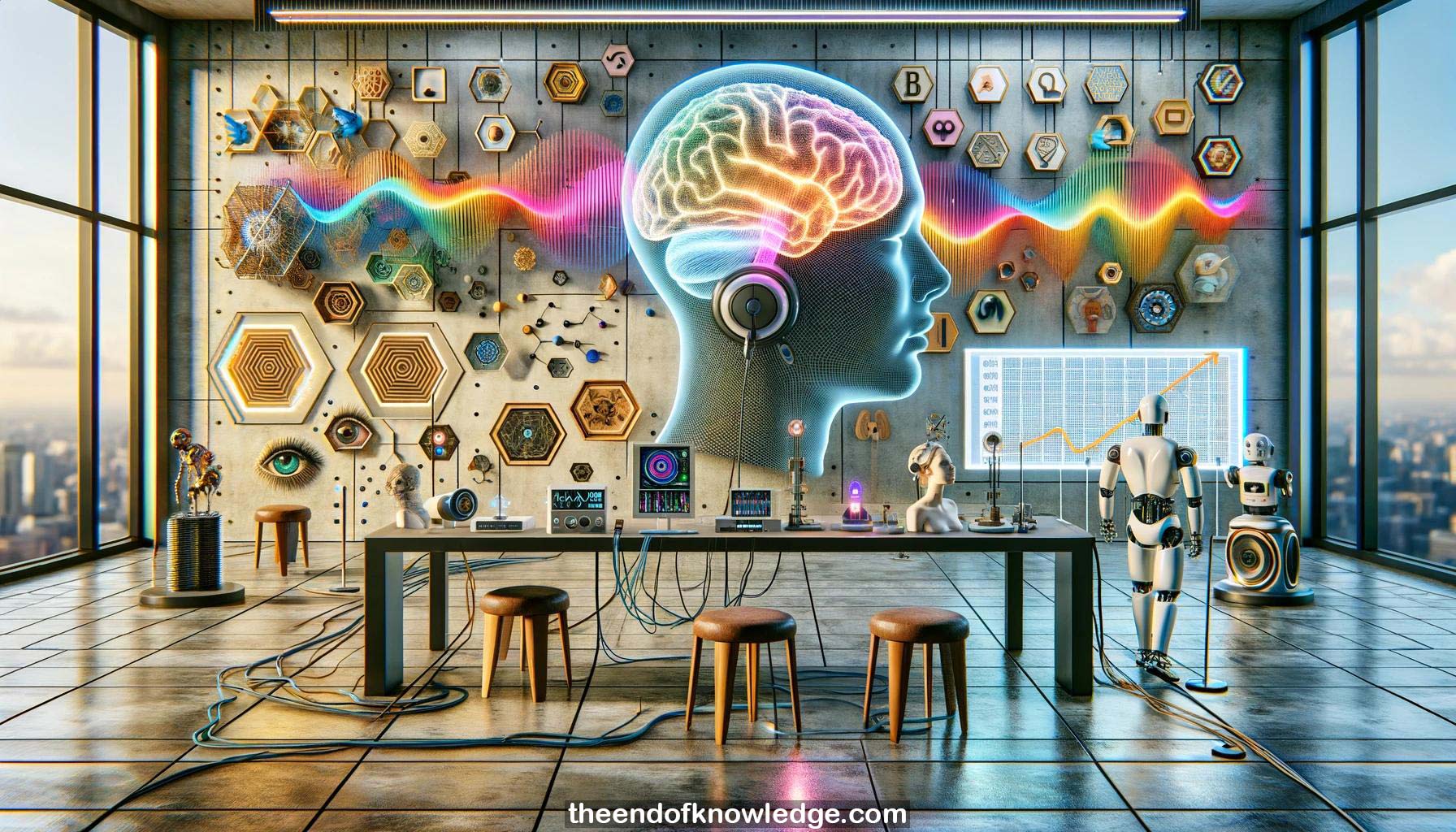 >
>
Concept Graph & Resume using Claude 3 Opus | Chat GPT4 | Llama 3:
Resume:
1.- Auditory BCI helps video-impaired people control devices. Optimizing with intelligent methods improves efficiency and flexibility.
2.- Robot control system with auditory BCI uses automatic search and face recognition to track faces, compensating for video defects.
3.- Three pure tones used as stimuli in auditory BCI: high (1000 Hz), middle (800 Hz), low (200 Hz) frequencies.
4.- Auditory BCI with robot control tested indoors. Subjects trained, then controlled robot to recognize and track faces.
5.- Averaging multiple trials improved classification accuracy close to 80%. Some subjects reached 100% accuracy controlling the robot.
6.- Two auditory paradigms compared - HLM (high/low/middle tones) and DS (do-re-mi tones). HLM performed better in accuracy.
7.- HLM tones were preferred by subjects over DS tones. Feedback used to optimize the auditory stimuli.
8.- Nature sounds like drip drops explored as more pleasant stimuli than beeps in auditory BCI.
9.- Drip drop stimuli intercepted from music clips at different spatial locations. Elicited comparable ERPs to beeps.
10.- Percussion instruments with/without background music tested as auditory BCI stimuli. Music preferred by subjects.
11.- Minor visual changes causing large contrasts used to design engaging visual BCI paradigms and reduce boredom.
12.- Visual mismatch negativity paradigm elicited larger N200/N400 ERPs than single image paradigm, improving target/non-target distinction.
13.- Honeycomb-shaped figures with random red dots used as visual stimuli to increase concentration and classification accuracy.
14.- Multi-phase paradigm with stable flash patterns explored to elicit more stable P300 and reduce errors in visual BCI.
15.- Error-related potential (ErrP) used to automatically detect and prevent incorrect P300 BCI outputs for ALS patients.
16.- Vibrotactile stimuli to left/right forearm and calf used for BCI in hemiplegic patients. Bilateral performed better than unilateral.
17.- Cheek-based tactile BCI developed as cheeks have lower tactile thresholds. Outperformed traditional wrist-based paradigms.
18.- Calibration methods proposed to optimize time windows for feature extraction in motor imagery BCI, improving accuracy.
19.- Covariance matrix calculation methods used to augment motor imagery features and classifier performance from limited data.
20.- Genetic algorithm used to shorten calibration time by 70% in P300 BCI while maintaining accuracy compared to standard calibration.
21.- Chinese character writing paradigm elicited stronger ERD patterns than arrows in motor imagery BCI for Chinese subjects.
22.- Motor imagery BCI performance not significantly affected by stroke. Helped limb may lead to better performance.
23.- Motor imagery BCI with FES applied for stroke rehabilitation, showing functional improvements over control group after training.
24.- P300 BCI speller successfully applied in late-stage ALS patients with high accuracy. Long-term stability needs further study.
25.- Over 100 stroke patients used motor BCI rehabilitation systems across hospitals in China with promising results.
26.- BCI systems developed for consciousness assessment and cognitive training in disorders of consciousness patients.
27.- Several medical device certifications obtained in China and Europe for the BCI products and systems developed.
28.- Video examples show stroke patients regaining limb function and performing daily tasks after motor BCI rehabilitation training.
29.- Active BCI research community in China with hundreds of researchers and regular domestic conferences held since 2006.
30.- Future work to focus on new motor imagery algorithms, expanding to more patient populations, improving user experience.
Knowledge Vault built byDavid Vivancos 2024